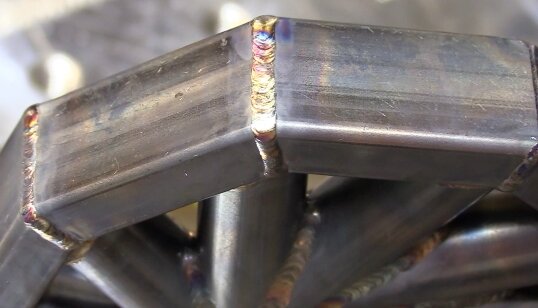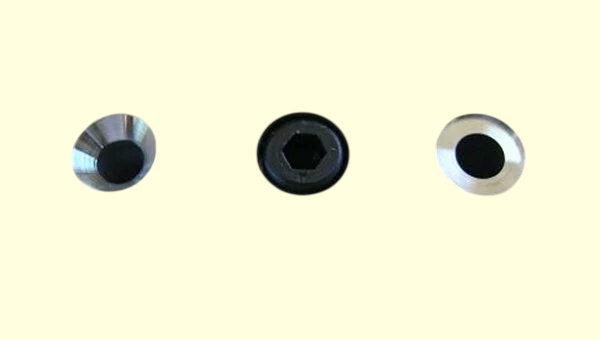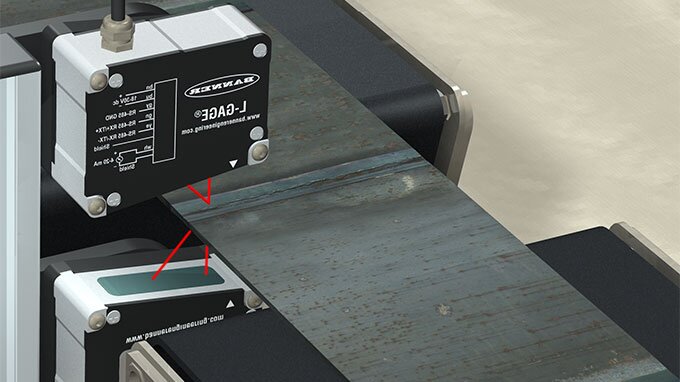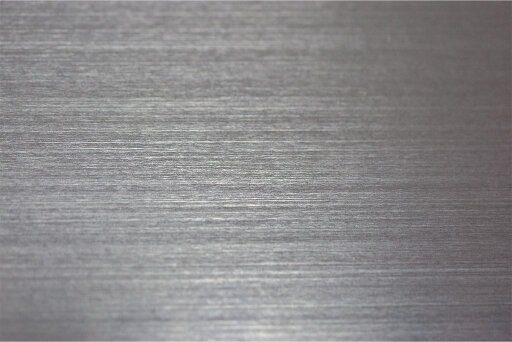La foratura profonda è un processo di lavorazione specializzato che crea fori con un elevato rapporto profondità/diametro. Ingegneri e produttori si trovano spesso ad affrontare sfide legate ai fori profondi, come il mantenimento della precisione e la gestione del calore. Questa guida vi aiuterà a comprendere le basi e le applicazioni della foratura profonda.
Permettetemi di condividere i dettagli chiave sui metodi di foratura profonda, sugli strumenti e sulle migliori pratiche. Queste conoscenze vi aiuteranno a scegliere l'approccio giusto per le vostre esigenze di produzione.
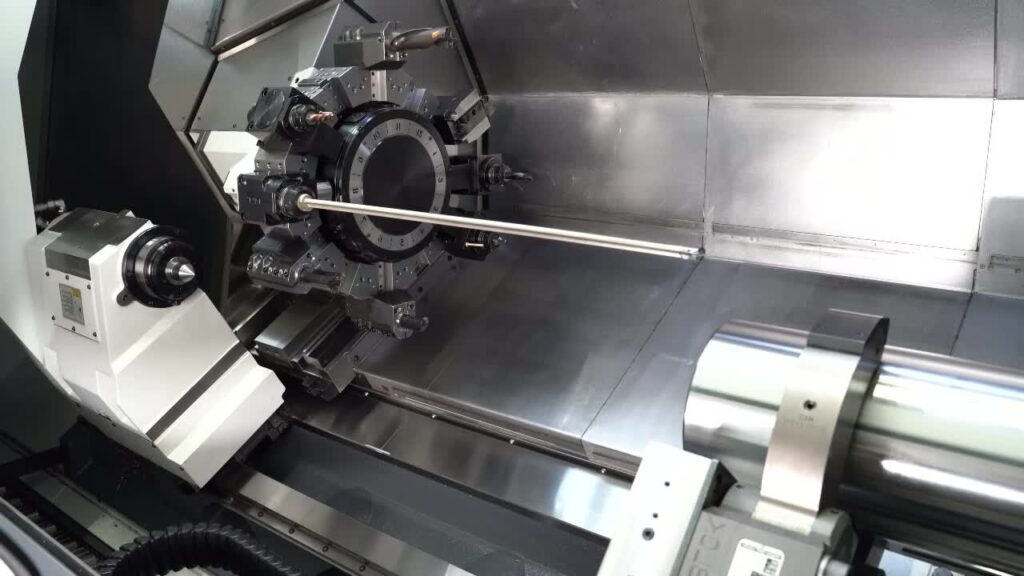
Che cos'è la trivellazione profonda?
La foratura profonda è un metodo per creare fori molto più profondi del loro diametro. In genere, la profondità del foro è almeno dieci volte superiore al diametro. Questo processo funziona su diversi materiali, dall'alluminio morbido alle superleghe resistenti, ed è quindi adatto a molti settori.
La tecnica è nata inizialmente dall'esigenza di forare canne d'arma da fuoco di alta precisione. In questi casi, il rapporto profondità/diametro poteva raggiungere i 20:1. Oggi la foratura profonda è utilizzata nell'industria aerospaziale, automobilistica e nella costruzione di stampi per creare fori accurati e profondi per i pezzi che richiedono resistenza e precisione.
Tipi di tecniche di perforazione profonda
Nella perforazione profonda si utilizzano diversi metodi. Ogni metodo ha i suoi vantaggi ed è adatto a compiti diversi. Di seguito, esaminiamo alcune delle tecniche più comuni.
Perforazione con pistola
La foratura a pistola è un metodo popolare per creare fori profondi e diritti. Utilizza una singola punta che ruota rapidamente mentre il refrigerante scorre al centro, aiutando a rimuovere i trucioli e a mantenere fredda la punta. La foratura a pistola è nota per la sua precisione e la finitura liscia.
Perforazione BTA
La foratura BTA utilizza un sistema a doppio tubo. Il refrigerante scorre attraverso il tubo interno, mentre i trucioli vengono rimossi attraverso il tubo esterno. Questo metodo è eccellente per eseguire fori più grandi e profondi con elevata precisione.
Foratura ad espulsione
La foratura a espulsione funziona in modo simile alla foratura BTA, ma con un tocco. Utilizza un espulsore interno per spingere i trucioli fuori dal foro. Questo metodo è adatto alla realizzazione di fori profondi in materiali duri.
Foratura con inserti indicizzati
La foratura con inserti indicizzati utilizza inserti da taglio sostituibili sulla punta. Quando gli inserti si consumano, possono essere sostituiti. Questo metodo è economicamente vantaggioso per la foratura di grandi volumi. È ideale per eseguire fori profondi in diversi materiali.
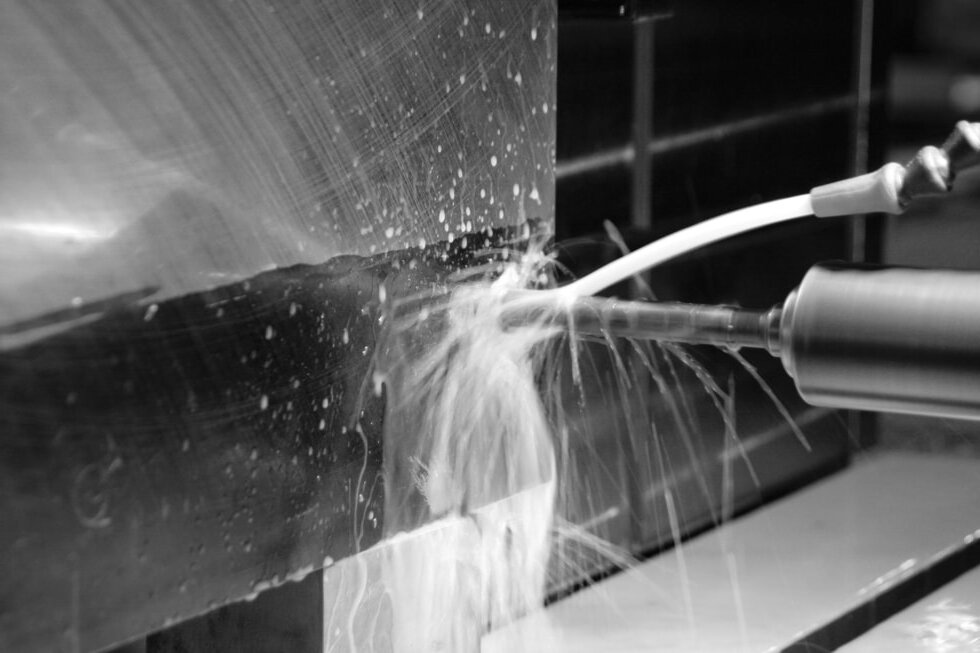
Vantaggi della perforazione a foro profondo
La perforazione a foro profondo offre diversi vantaggi significativi, che la rendono un metodo preferito in molti settori. Ecco alcuni dei principali vantaggi di questa tecnica.
Alta precisione e tolleranza
La foratura profonda è nota per la sua elevata precisione. Può creare fori dritti e profondi con tolleranze ristrette. Assicura che i fori siano conformi a specifiche rigorose, riducendo il rischio di errori.
Maggiore velocità di asportazione del materiale
Un vantaggio fondamentale della foratura profonda è la velocità di rimozione del materiale. Questo metodo consente un taglio più rapido rispetto alla foratura tradizionale. Con gli strumenti e il refrigerante giusti, rimuove efficacemente il materiale.
Capacità di eseguire fori lunghi
La foratura profonda è progettata per creare fori lunghi e stretti. È in grado di praticare fori con una profondità molte volte superiore al loro diametro, cosa difficile con i metodi di foratura normali. Questa tecnica garantisce che i fori mantengano un diametro costante, anche in materiali difficili.
Industrie che utilizzano la perforazione profonda
La foratura profonda è utilizzata in molti settori che richiedono precisione e prestazioni elevate. Di seguito sono riportati alcuni settori chiave che si affidano a questa tecnica.
Aerospazio e Difesa
Nel settore aerospaziale e della difesa, la foratura profonda produce pezzi come iniettori di carburante, componenti di motori e canne di armi. In questo modo si garantisce che i pezzi funzionino come richiesto e rispettino gli standard di sicurezza.
Automotive
L'industria automobilistica utilizza la foratura profonda per parti come componenti del motore, sistemi di alimentazione e trasmissioni. Questo metodo consente di creare fori precisi in parti che devono sopportare pressioni e sollecitazioni elevate.
Petrolio e gas
Nell'industria petrolifera e del gas, la foratura profonda è fondamentale per la perforazione di pozzi profondi e per la lavorazione di materiali rigidi. Viene utilizzata per la perforazione di pozzi petroliferi e per la realizzazione di fori per valvole e pompe.
Produzione di apparecchiature mediche
La foratura profonda è importante anche nel settore delle apparecchiature medicali. Viene utilizzata per realizzare componenti come siringhe, impianti e altri dispositivi, che spesso necessitano di fori profondi e precisi per funzionare correttamente.
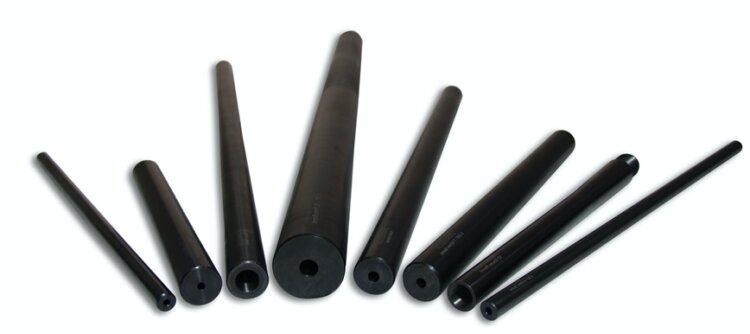
Considerazioni sugli strumenti e le attrezzature per la perforazione in profondità
La scelta degli strumenti e delle attrezzature giuste è fondamentale per ottenere precisione ed efficienza nella perforazione di fori profondi. Ecco alcuni fattori chiave da tenere a mente.
Scegliere la punta da trapano giusta
La punta deve essere solida e progettata per gestire il materiale da forare. Fattori quali la profondità del foro, il diametro e il tipo di materiale influiscono sulla scelta della punta. Per fori profondi e stretti è spesso necessaria una punta speciale, come una punta a pistola o una punta BTA.
Importanza dei refrigeranti
I refrigeranti svolgono un ruolo essenziale nella perforazione di fori profondi. Contribuiscono a mantenere fredda la punta del trapano, evitando che si surriscaldi e si usuri troppo rapidamente. Inoltre, i refrigeranti eliminano i trucioli dal foro, contribuendo a mantenere la precisione.
Utilizzare attrezzature di qualità
Un'attrezzatura di alta qualità è fondamentale per ottenere i migliori risultati nella perforazione di fori profondi. Un'attrezzatura di qualità garantisce l'efficienza del processo di perforazione, la durata dell'utensile e la conformità del prodotto finale agli standard richiesti.
Sfide comuni nella perforazione profonda
La perforazione di fori profondi offre molti vantaggi, ma presenta anche una serie di sfide. Ecco alcuni problemi comuni che possono sorgere durante il processo.
Usura e guasto degli utensili
L'usura degli utensili è una sfida importante nella perforazione di fori profondi. La perforazione di materiali tenaci può causare una rapida usura della punta e le alte velocità e il calore del processo peggiorano la situazione. È essenziale utilizzare punte di alta qualità e un raffreddamento adeguato per evitare guasti agli utensili.
Mantenere la precisione su lunghe distanze
Man mano che il foro diventa più profondo, diventa più difficile mantenere la precisione. Più il foro è lungo, più è difficile allineare la punta. È essenziale utilizzare attrezzature di perforazione avanzate e mantenere condizioni costanti per mantenere il foro dritto e coerente.
Garantire la stabilità del pezzo
Un'altra sfida consiste nel mantenere stabile il pezzo da lavorare. Se il pezzo si sposta durante la foratura, il foro può risultare impreciso. Per evitare questo inconveniente, è necessario assicurarsi che il pezzo sia posizionato in modo sicuro utilizzando morsetti adeguati e fissaggio.
Perforazione profonda rispetto ai metodi di perforazione tradizionali
Foratura profonda e perforazione tradizionale I metodi di perforazione profonda presentano differenze fondamentali. Confrontiamo velocità, precisione e costi e vediamo quando scegliere la foratura profonda rispetto ad altri metodi.
Confronto tra velocità, precisione e costi
Velocità: La foratura profonda può essere più veloce dei metodi tradizionali quando si eseguono fori stretti e profondi. Il processo è progettato per rimuovere il materiale in modo efficiente. Tuttavia, la foratura tradizionale può essere più rapida per i fori poco profondi o per i progetti più piccoli.
Precisione: La foratura profonda è nota per la sua precisione. Può creare fori profondi e diritti con tolleranze ristrette. I metodi tradizionali possono funzionare bene per fori poco profondi, ma possono faticare a mantenere la precisione su lunghe distanze.
Costo: La perforazione in profondità tende a essere più costosa. Richiede strumenti e attrezzature speciali. Tuttavia, il prezzo vale la pena quando è necessaria un'elevata precisione. I metodi di foratura tradizionali sono generalmente più economici, ma potrebbero non offrire la stessa precisione per i fori profondi.
Quando scegliere la perforazione a foro profondo rispetto ad altri metodi
La foratura profonda è la scelta migliore per realizzare fori profondi e stretti con elevata precisione. È ideale per settori come quello aerospaziale, automobilistico e delle apparecchiature mediche. La foratura profonda dà i migliori risultati se il foro è molto più profondo del suo diametro.
Conclusione
La foratura profonda è una tecnica specializzata che offre precisione ed efficienza per creare fori lunghi e stretti in vari materiali. È particolarmente utile in settori come quello aerospaziale, automobilistico, petrolifero e del gas e nella produzione di apparecchiature mediche. Conoscere i diversi tipi di metodi di foratura profonda può aiutare a scegliere la tecnica più adatta alle proprie esigenze.
Se siete alla ricerca di soluzioni di precisione per la foratura profonda o avete bisogno di consigli per scegliere la tecnica giusta per il vostro progetto, non esitate a contattarci. Il nostro team di esperti è a disposizione per aiutarvi a fare la scelta migliore per le vostre esigenze di produzione.
Domande frequenti
Qual è la profondità massima raggiungibile nella perforazione profonda?
La profondità massima dipende dal materiale e dal metodo di perforazione. In genere, la foratura profonda può raggiungere profondità fino a 300 volte il diametro del foro, ma questo varia a seconda della tecnica e della capacità della macchina.
Che tipo di trapano si usa per i fori profondi?
Le punte a cannone, le punte BTA e le punte a espulsione sono le punte per fori profondi più comuni. Ciascuna di esse è progettata per garantire un'elevata precisione e un'efficiente rimozione del materiale in fori profondi e stretti.
Qual è il rapporto standard per la perforazione profonda?
Il rapporto standard profondità/diametro per la perforazione di fori profondi è in genere di 10:1 o superiore. Per alcune applicazioni specializzate, questo rapporto può raggiungere 20:1 o più.
Ciao, sono Kevin Lee

Negli ultimi 10 anni mi sono immerso in varie forme di lavorazione della lamiera, condividendo qui le mie esperienze in diverse officine.
Contattate

Kevin Lee
Ho oltre dieci anni di esperienza professionale nella fabbricazione di lamiere, con specializzazione nel taglio laser, nella piegatura, nella saldatura e nelle tecniche di trattamento delle superfici. In qualità di direttore tecnico di Shengen, mi impegno a risolvere sfide produttive complesse e a promuovere innovazione e qualità in ogni progetto.

